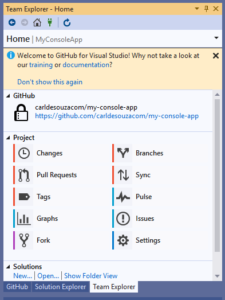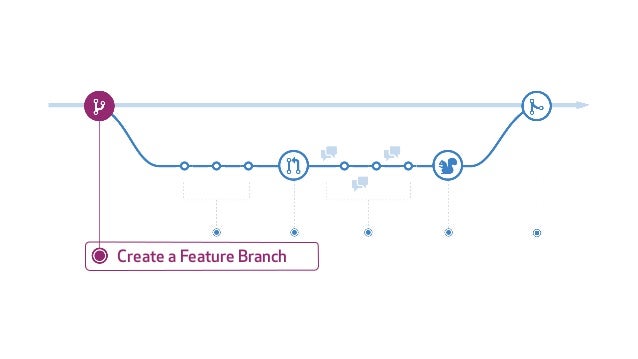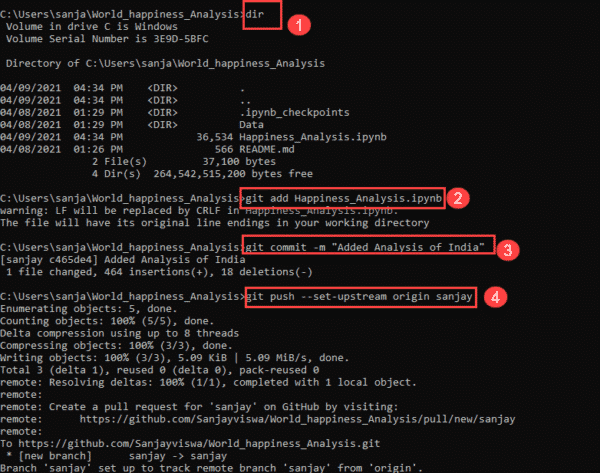

A new screen pops-up with the following information. Alternatively, go to ‘Pull requests’ and find it there.Ĭlick on compare & pull requests or go to the section Pull requests and create a New pull request (select the branches you want to incorporate). In both cases you should see the following yellow screen. Whether you are on the main or new-feature branch, doesn’t matter.
GITHUB NEW BRANCH HOW TO
In this section we will explain how to do a pull request, often shorted to PR. Branches are merged by making a pull request. Merging branches on GitHubīefore exploring how we make branches on our computer locally, we’ll merge the changes in the new-feature branch into the main branch. Switch back to your main branch and have a look to the plot2.R-file.
GITHUB NEW BRANCH INSTALL
# Install requirements & plotting of 3D scatterplot install.packages ( "scatterplot3d" ) library ( scatterplot3d ) attach ( mtcars ) scatterplot3d ( wt, hp, mpg, pch = 16, highlight.3d = TRUE, type = "h", main = "3D Scatterplot" ) solution SolutionĮdit the file plot2.R by clicking on the pencil icon and add the following lines:Ĭommit your changes with a useful commit message and save by clicking the green ‘Commit changes’-button. These lines will allow us to investigate the relation between the weight, horsepower and miles per gallon variables of mtcars dataset in R. Add the following lines that will make a new plot.

It’s very important to understand that any changes that happen in this branch, will not be influencing the main branch.Įdit the plot2.R file again, however make sure you’re in the new-feature branch.

Branches are of course disposable, you can always remove them. It’s especially useful to create a new branch for every new feature you start working on. It’s a good practice to create a new branch for every new bit of work you start doing, even if it’s a very small one. Branches are ways of organising work on a project: you can have a branch for a new feature, for trying out something new, for exploring an issue - anything at all.

We will first show you the latter (section 2) and afterwards how to do it locally via Git Bash or the Terminal (section 4).Ī repository can have numerous branches. There are two ways of doing this: locally or on the GitHub website. If we would make a new branch, we can name it however we like (e.g. Remember that when we did git status we read a line saying that we were on the main branch. All the changes in our project that we did so far, have hence always been in this main branch. The original repository is now called the master branch, however historically was called the main branch.Ī new GitHub repository is initialized by default with one branch: the main branch.
GITHUB NEW BRANCH CODE
It’s a great way of testing new changes in some code when you’re not sure whether it will work, and in the meanwhile not messing up the code that you already have. If the new feature is working properly we can merge it back into the project. This branch is a completely separate version of your project and lives next to your original version. The idea of branching is that we can create a copy of the project in which we can add a new feature.


 0 kommentar(er)
0 kommentar(er)
